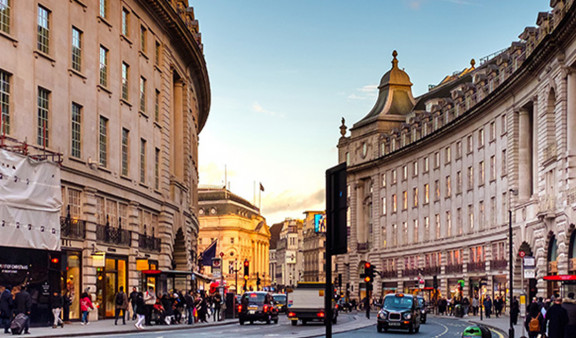
What now for the high street?
In a year of unpredictability, the rise of ecommerce has been one of the stand-out success stories.
Many believed the cogs of online retail might break under the relentless pressure of increased traffic and extra deliveries in the face of the pandemic lockdowns.
However, brands embracing digital have often showed the greatest resilience and agility, and pivoted strategies accordingly.
Sadly, it has been an altogether different story for UK high streets, with 320 shops closing every week last year, according to Centre for Retail Research – the worst year for a quarter of a century.
Topshop and Miss Selfridge are the latest famous brands to fall, with online fashion retailer ASOS snapping up part of Sir Philip Green’s Arcadia empire for £330million at the start of the month after it collapsed into administration. In January, online fashion retailer Boohoo bought the Debenhams brand and website for £55million.
Redbox CEO Jonty Sutton believes the rise of ecommerce and loss of major brands doesn’t mean the death of the high street.
He said: “The Debenhams purchase is an eye opener, but not surprising. Covid has accelerated what was already going to happen to retail over the next five years, condensing the process into 12 months.
“It’s big news because it’s a business that is several hundred years old now going completely online with Boohoo. Boohoo didn’t even exist a decade or so ago, it’s insane.
“Fast forward two or three months when shops can open fully and these brands with large physical retail footprints have now gone, so there will be holes in the middle of our towns.
“Yes, the high street is already decimated, and this will hit home to a lot of people in the coming months. And it’s not just retailers, pubs and restaurants will close and places we are used to going to, won’t reopen.
“But it’s not the death of the high street. I think, ironically, Covid will regenerate it.
“People are desperate to get out of their homes and the high street will play a part in that. The questions are how it will regenerate and who will come-up with those ideas to get people back in to town centres and the high street?”

Redbox Digital's CEO, Jonty Sutton
The high street conundrum is not new. Out-of-town shopping malls, high landlord rents, business rates and the rise of ecommerce have all been blamed on the decline of the high street.
Professor Cathy Parker, chair of the Institute of Place Management at Manchester Metropolitan University said their research identified more than 200 factors that affect the vitality and viability of town centres, with the will to reinvent key to regeneration.
She said: “By analysing footfall data we believe only about a quarter of town centres are still anchored by retail. The towns responding well are the ones that really understand their catchment, the function they serve and, really importantly, their relationship with other centres.
“They are developing their own set of moves, and they know that solving the high street puzzle is a combination of repositioning, reinventing, rebranding and restructuring. All of these processes need buy-in from a wide group of people, and a combination of leaders and doers.
“They are processes, not projects. They do not have start and finish dates. They are ongoing commitments.”
Jonty is in full agreement, hoping spring and summer will provide a feel-good factor that could act as a springboard to new business and ideas.
He continued: “We are all social animals, so there’s going to be a big wave of people wanting to get out and meet each other when we are able to do so.
“The hospitality industry will be interesting. When it comes to spring and summer, I think people will be less inclined to get delivery. They will want to get out.
“If it’s in time for summer, the social scene will be huge if it’s opened up enough. People are so desperate to have some sort of normality that I think food and beverage businesses will do well out of it. Hospitality will play a massive part in this push.
“But there are only so many restaurants and parks near our homes that there have to be draws for different demographics.
“Maybe this bounce with the re-opening will be what’s needed to look at the issues facing our high streets much more closely.”
However, for retail in general, it’s far from doom and gloom. Ecommerce has led the way over the past year and Jonty has been impressed with how brands have adjusted during the pandemic.
He said: “It has been a pleasant surprise just how quickly some brands have adapted to delivery and digital services that they may not have had before, and now it’s the lifeblood of the business.
“Deliveroo is a great example of a business that reacted and scaled to conform and help the situation.
“Despite losing some of its bigger restaurant brands early on in the pandemic and warning it could collapse, it cleared funding from Amazon, diversified into on-demand grocery delivery and is now expanding into another 100 towns and cities across the UK after growing a number of other restaurant partnerships.
“It’s also been impressive to see how quickly most brands have adapted. Redbox client Seasalt saw its entire retail estate shutting which throws all things up in the air, but many businesses in a similar position went digital quickly and adjusted their supply chain and delivery.
“It’s surprised me that delivery chains didn’t fall over. They had huge problems in 2018 and 2019, so 2020 should have been catastrophic. But they upscaled quickly and really there was only the odd problem – despite how prolific the volumes were.”
For now, digital brands with physical stores must be ready to open up when given the green light. They must look for ways to ensure the combination of digital and physical can combine seamlessly to promote the best customer experiences. But they must invest in digital to remain agile enough to pivot strategies should more issues present themselves again later in the year.
Jonty added: “There’s definitely a desire for customers to get back into physical retail, for the experience and the tactile joy of shopping and the need to try on.
“Our client, Seasalt, saw a huge spike in customers when they opened up after the first lockdown - people were desperate to get in a store and talk to people. You can never replicate that.
“We are seeing more of our customers accelerating their expansion plans into digital which I think could be the answer to the high street too. The mix of online helping drive customers to the bricks and mortar stores.
“But as the last year has shown us, it’s also essential that brands are ready for all eventualities. Investment in digital strategy is the key."